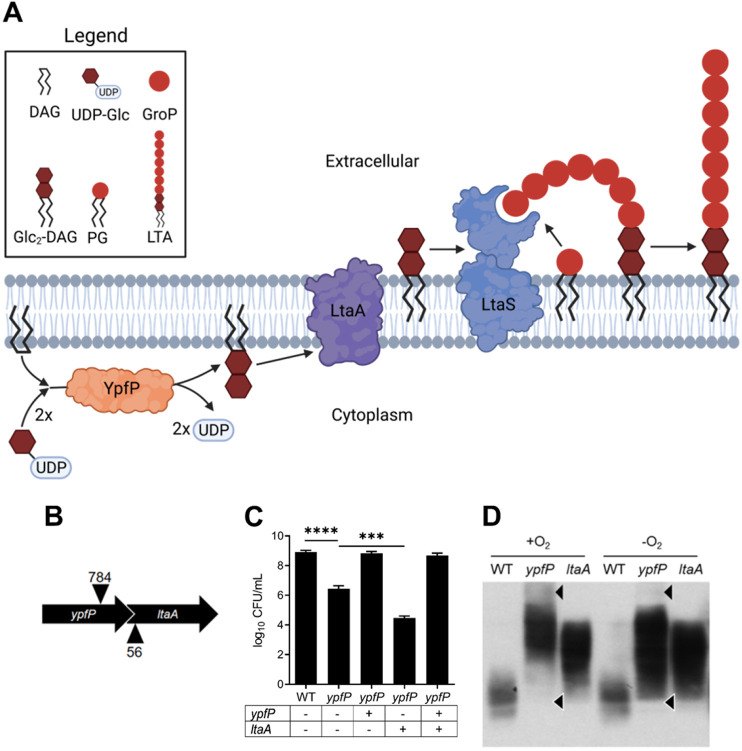FIG 3.
ypfP, not ltaA, is responsible for alterations in viability and LTA production under anaerobic conditions. (A) The LTA-biosynthetic pathway in S. aureus. YpfP uses DAG and two UDP glucose (UDP-Glc) molecules to generate the lipid anchor Glc2DAG. Glc2-DAG is then flipped to the outer leaflet of the membrane by LtaA, and glycerol phosphate (GroP) taken from phosphatidylglycerol (PG) is added directly to the anchor by LtaS. Illustration created using Biorender.com. (B) Illustration of the ypfP ltaA operon demonstrating the 41-bp ypfP-ltaA overlap. Locations of transposon insertions are indicated with arrowheads. (C) WT and ypfP mutant NWMN cells harboring the S. aureus expression vector pOS containing the indicated genes were spot plated on TSA and incubated in an anaerobic chamber for 24 h of growth at 37°C prior to CFU enumeration. Data are means from three independent experiments performed in triplicate. Error bars represent one standard deviation from the mean. Significance was determined via two-tailed t test. ****, P < 0.0001; ***, P < 0.001. (D) Representative immunoblot using a monoclonal anti-LTA antibody and a secondary antibody conjugated with horseradish peroxidase shows the altered LTA profiles of NWMN ypfP and ltaA mutants cultured under aerobic (+O2) and anaerobic (−O2) conditions compared to the WT. Differences in the LTA profile are indicated with arrowheads.

